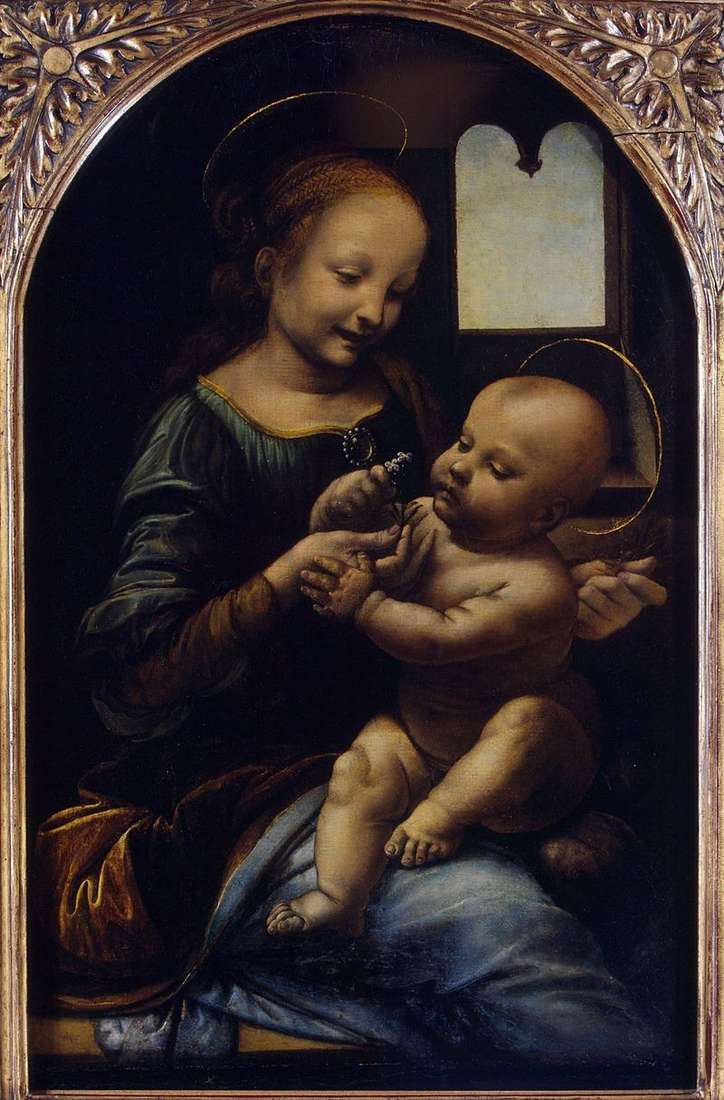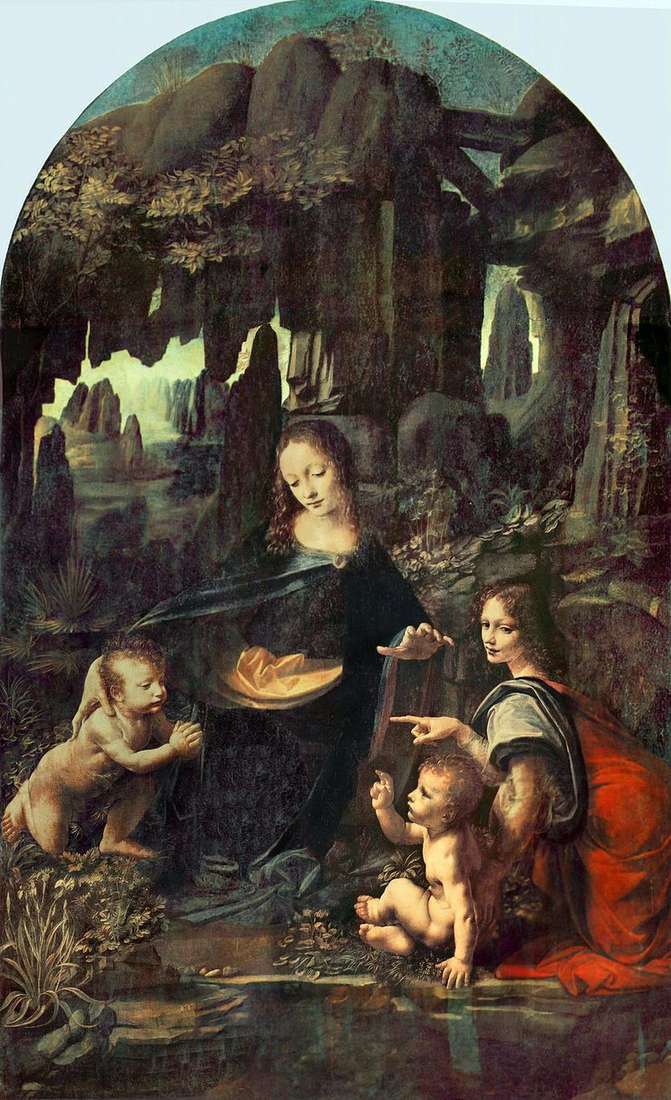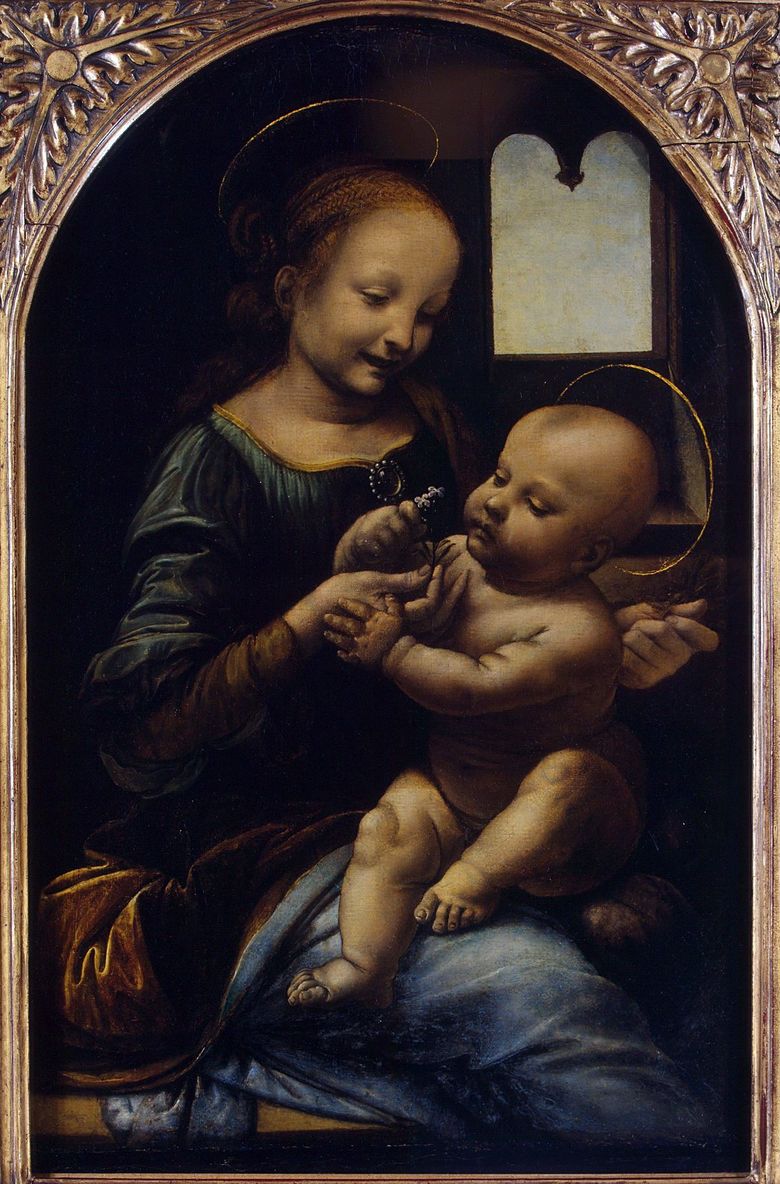
Around 1480 by the artist Leonardo da Vinci was written the Hermitage “Madonna with a flower” – a work bearing in itself a new holistic design and representing the first important milestone on the creative path of Leonardo. In his small picture, the young artist chose one of the most popular motifs in the painting of the early Renaissance – the image of the Madonna in the intimate lyric plane, when the theme of motherhood is expressed simply and artlessly, without the complexity of the ideological and visual design that is characteristic of large altar compositions.
Leonardo da Vinci has not yet reached full maturity of skill – this affects the not very successful – too large and looking a little conditional – the figure of the baby. And yet the picture “Madonna Benoit” stands out among the quattrocentent compositions close to her on the subject, in which the image of the Madonna seems static, stiff not only externally, but also internally, for they do not have such an open outpouring of feeling as in the glowing happiness of the motherhood of Leonard’s Mary. Introducing the motif of the game of a young mother and a child with a flower, Leonardo da Vinci does not go over the line, after which a petty, typical for many painters of the 15th century, begins to appear a genre, everyday likelihood.
The vital truth of Leonardo da Vinci is a high truth, and in accordance with it the pictorial language in this picture is more generalized than in its earlier works – by the concentration of the vision, the ability to see a little in the little that is already a feature of the High Renaissance. Figures of the Madonna and baby, filling almost the whole picture, already with one of its large plastic form its space. There are no distracting details.
Instead of a richly detailed, highly detailed quattrocentist background, only a very concise motive: a window in a dark wall, simultaneously showing that the action takes place in the interior, and allows you to see beyond its walls a clear blue sky. In the painting itself, which does not shine with bright colorful effects, instead of the Florentine disjointed, passively juxtaposed color patches, the sensation of a peculiar single tone slips.
 Madonna Litta by Leonardo Da Vinci
Madonna Litta by Leonardo Da Vinci Madonna with a carnation by Leonardo Da Vinci
Madonna with a carnation by Leonardo Da Vinci Madonna in the rocks (Madonna in the grotto) by Leonardo da Vinci
Madonna in the rocks (Madonna in the grotto) by Leonardo da Vinci Madonna with spinning wheel by Leonardo Da Vinci
Madonna with spinning wheel by Leonardo Da Vinci Madonna con una flor (Madonna Benoit) – Leonardo da Vinci
Madonna con una flor (Madonna Benoit) – Leonardo da Vinci Madonna with the Child and Saint Anna by Leonardo da Vinci
Madonna with the Child and Saint Anna by Leonardo da Vinci Vierge à la fleur (Madonna Benoit) – Léonard de Vinci
Vierge à la fleur (Madonna Benoit) – Léonard de Vinci Madonna and Child, Anna and John by Leonardo da Vinci
Madonna and Child, Anna and John by Leonardo da Vinci